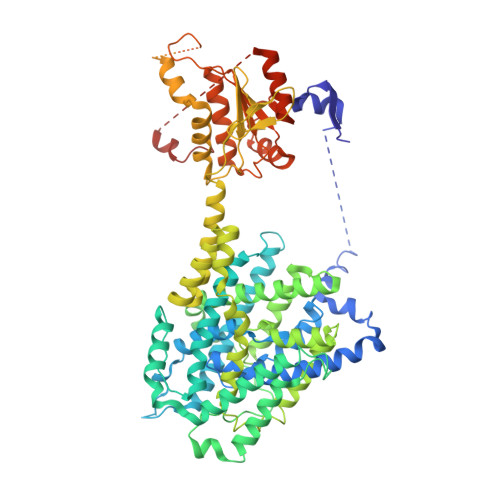Structural insights into the gating mechanism of human SLC26A9 mediated by its C-terminal sequence.
Chi, X., Jin, X., Chen, Y., Lu, X., Tu, X., Li, X., Zhang, Y., Lei, J., Huang, J., Huang, Z., Zhou, Q., Pan, X.(2020) Cell Discov 6: 55-55
- PubMed: 32818062
- DOI: https://doi.org/10.1038/s41421-020-00193-7
- Primary Citation of Related Structures:
7CH1 - PubMed Abstract:
The human SLC26 transporter family exhibits various transport characteristics, and family member SLC26A9 performs multiple roles, including acting as Cl - /HCO 3 - exchangers, Cl - channels, and Na + transporters. Some mutations of SLC26A9 are correlated with abnormalities in respiration and digestion systems. As a potential target colocalizing with CFTR in cystic fibrosis patients, SLC26A9 is of great value in drug development. Here, we present a cryo-EM structure of the human SLC26A9 dimer at 2.6 Å resolution. A segment at the C-terminal end is bound to the entry of the intracellular vestibule of the putative transport pathway, which has been proven by electrophysiological experiments to be a gating modulator. Multiple chloride and sodium ions are resolved in the high-resolution structure, identifying novel ion-binding pockets for the first time. Together, our structure takes important steps in elucidating the structural features and regulatory mechanism of SLC26A9, with potential significance in the treatment of cystic fibrosis.
Organizational Affiliation:
Key Laboratory of Structural Biology of Zhejiang Province, Institute of Biology, Westlake Institute for Advanced Study, School of Life Sciences, Westlake University, 18 Shilongshan Road, Hangzhou, Zhejiang 310024 China.
















